Robust Satellite Data Unit Modeling for Airborne Networks
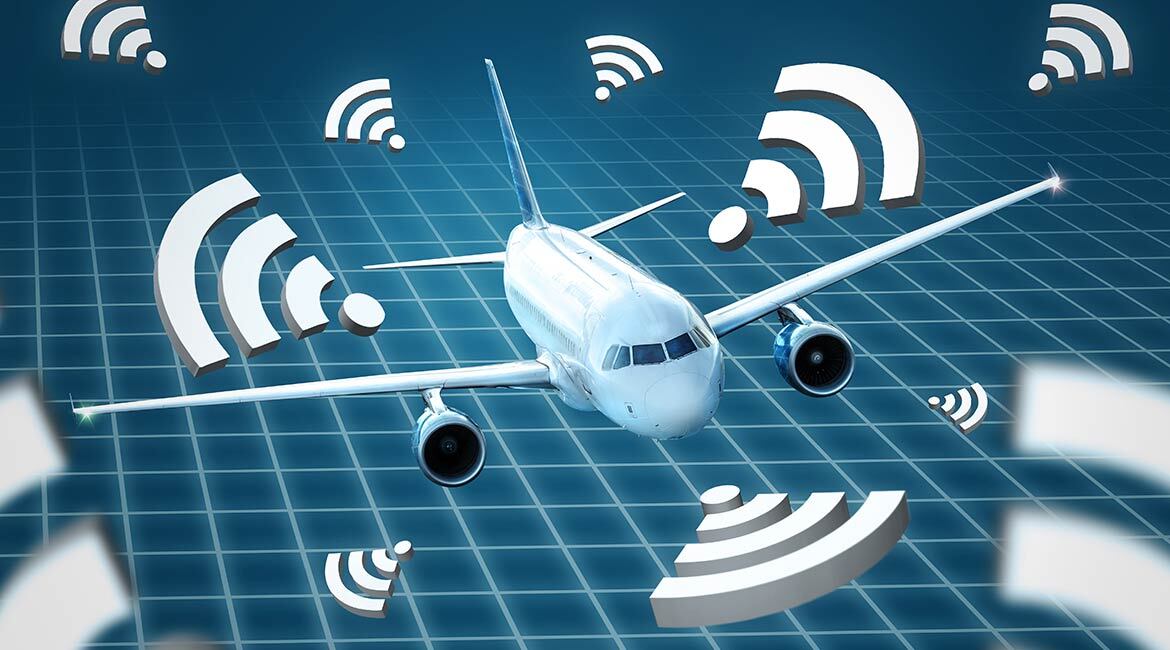
Purchased from Istock.com. Copyright.
LASSENA presents a Simulink model–based approach for the simulation and optimization of a robust satellite data unit (SDU) able to deliver safety and non-safety aeronautical mobile satellite services, including capabilities to operate in an airborne network. For this purpose, analysis and modeling of the main avionics system signals and data traffic to be processed in an SDU were performed.
Satellite Data Unit (SDU)
An SDU is an avionics implement installed in an aircraft that allows air-to-ground communication via a satellite communication (satcom) network. The SDU connects with a satellite via a radio frequency communication link, and the satellite then connects to a ground station or vice versa. It is worth mentioning that, in this study, the SDU is also capable of performing air-to-air communications (see Fig. 1).
Airborne Network (AN)
The Airborne Network is defined as an infrastructure that provides communication transport services through a backbone in-the-sky, i.e. through at least one node based on a platform capable of flight.
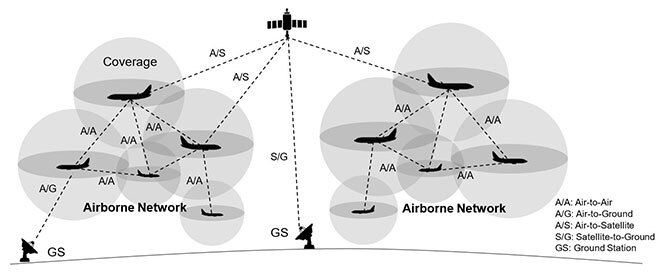
Fig. 1. Airborne Network.
Signals to Simulate
In order to model a robust SDU for AN we need to know what kind of Aeronautical Mobile Satellite Services (AMSS) will be processed within this unit, as well as their priority. For the purposes of this simulation, we will consider mainly three kinds of communication systems:
1. Aircraft Communications Addressing and Reporting System (ACARS)
The ACARS system is a network of A/G communications used to transmit or receive data automatically or manually. The ACARS system was first introduced to enable aircraft to send their take-off and landing reports automatically to airline computers; today the system is installed in almost all commercial aircraft and is being used for applications that require a very reliable service.
2. Automatic Dependent Surveillance – Broadcast (ADS-B)
ADS-B is a surveillance technique in which an Aircraft Earth Station (AES) transmits via data link a number of parameters extracted from the navigation and positioning systems on board. The idea is therefore that the AES, equipped with a Global Positioning System (GPS), calculates its own data (identity, position, speed, intent, altitude, etc.) and sends it regularly by radio to GSs and other AES equipped with ADS-B present in the flight area.
3. In-Flight Connectivity (IFC)
In-Flight Connectivity is a term which comprises a broad range of services offered to passengers (audio, video, Wi-Fi, etc.) during flight. The IFC system comprises data services like Wi-Fi and mobile telephony to help passengers keep in touch with people on the ground.
Simulation Architecture
The simulation model of the SDU inside an AES for AN is based on one-way communication, sending safety and non-safety information from the AES to the Ground Earth Station (GES) using a satcom channel. This architecture allows us to transmit simulation data from ACARS, ADS-B, and IFC message generators, from the SDU of the neighboring AES (NAES) to the SDU of the AES. The AES will immediately send the data received by adding its own data, using an A/A link [1]; the goal is to ensure sending of not only the messages of AES in AN but also data from NAES via AMSS. This link is performed considering random noise, which is added in the transmission and controlling the signal-to-noise ratio (SNR) for simulation purposes [2].
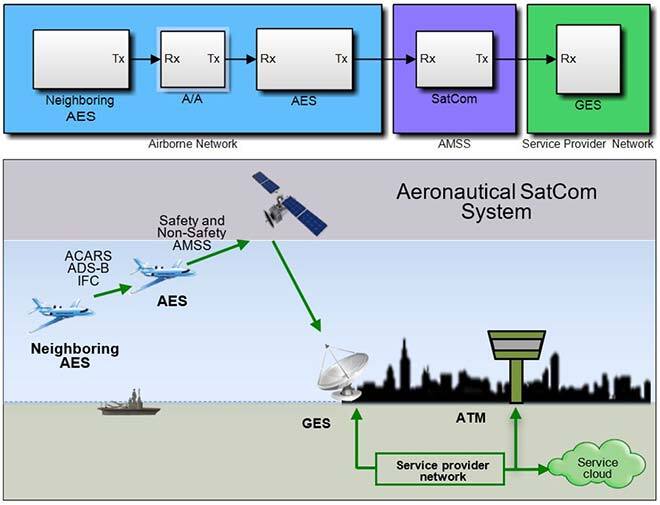
Fig. 2. Simulation architecture and scenario
Results and Conclusion
To evaluate the performance in the SDU, it is necessary to measure the bit error rate (BER) in all channels. In Fig. 3 we can see that in the SDU for safety and non-safety AMSS communications cases, from a Signal-to-noise ratio (SNR) equal to or greater than −20 dB, the system maintains a good performance; regardless of the SF variation, the BER is kept at zero. For SNR values lower than −20 dB, the increase in the SF value allows better performance in these communication channels, maintaining a BER in the order of 10−3, these measures will allow us to decide, in further work, on appropriate adaptive coding and modulation (ACM) for future implementation.
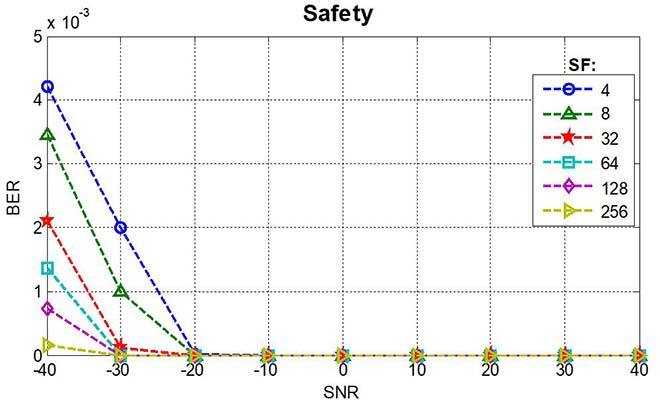
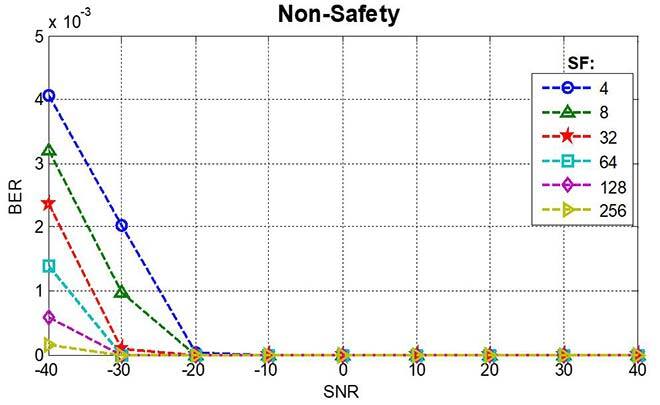
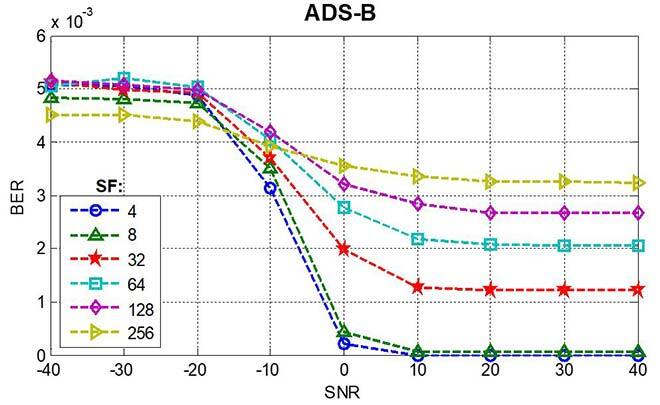
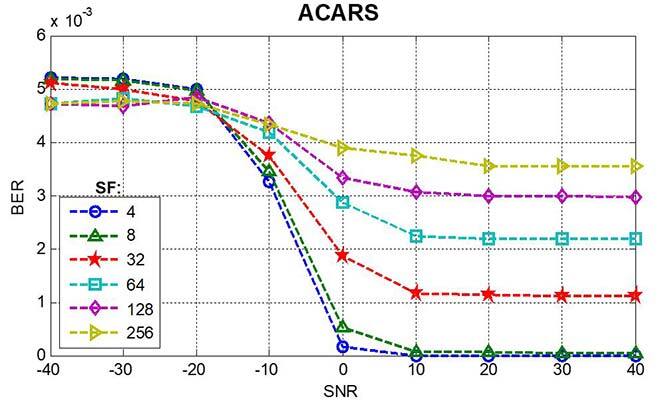
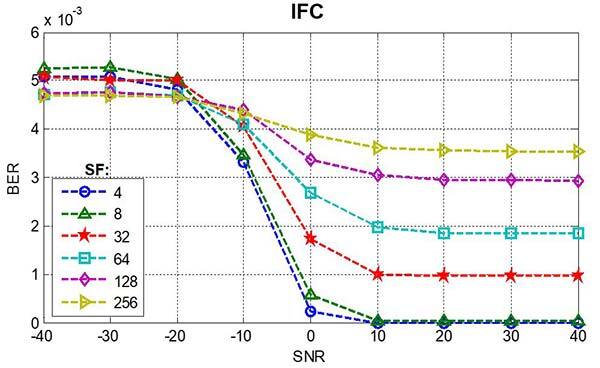
Fig. 3. Bit error rate values for different SNRs.
Key contributions of this paper include signal processing architecture and design from NAES to ground Earth station via the SDUs, and the demonstration of the flexibility of SDUs in an AN for coordinated optimization of network services while locally maintaining performance of the individual AES’s own data communication service.
Additional Information
For more information on this research, please refer to the following paper: Zambrano, J.; Yeste-Ojeda, O.A.; Landry Jr., R. “Simulation/Optimization Modeling for Robust Satellite Data Unit for Airborne Network.” Journal of Air Transportation Vol. 27, No. 1, January 2019. 10 (12), http://arc.aiaa.org, DOI: 10.2514/1.D0104.



